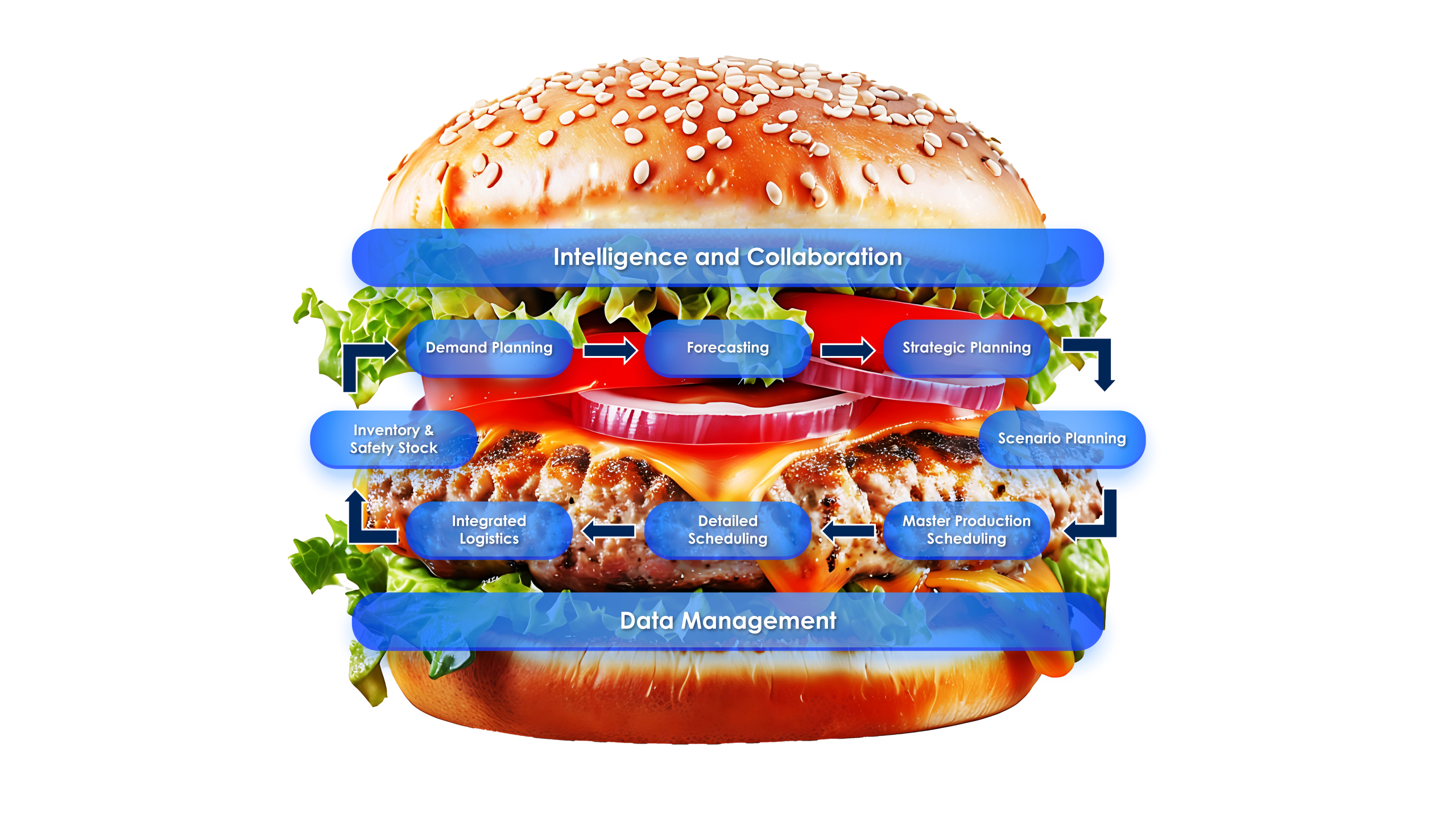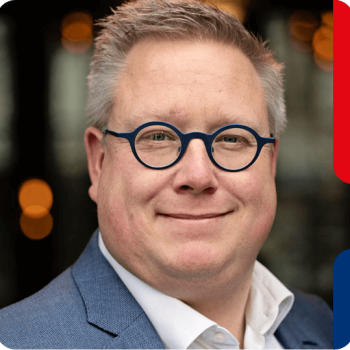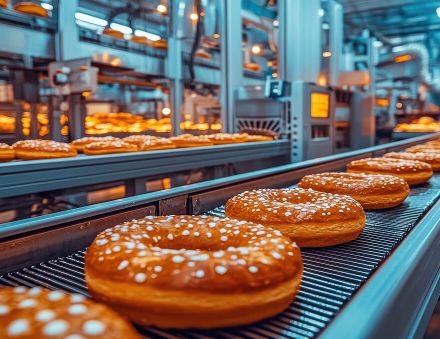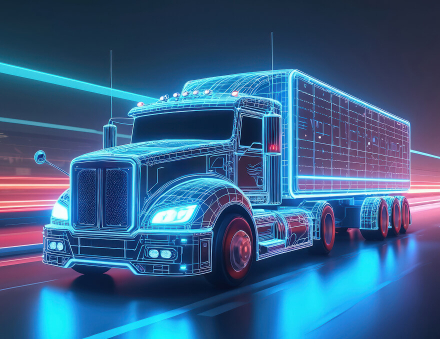Why Sustainable Optimization and The Hamburger Framework are the Future of Supply Chain Success
In today’s fast-paced, ever-changing business landscape, how do you go beyond survival to truly thrive in this environment? The answer lies in Planning 2025 – a new way of approaching supply chain planning that embraces flexibility, data-driven decision making, and collaboration. Planning 2025 is not just about optimizing for efficiency; it’s about building resilient supply chains that can adapt quickly, have your sustainability and ESG goals at their heart, and leverage advanced technology to create long-term value.
Over the past three articles, we’ve introduced two building blocks that are transforming supply chain management: Sustainable Optimization and The Hamburger Framework. These aren’t just buzzwords – they represent a fundamental shift in how you can create, build, and/or manage resilient, high-performing supply chains that will adapt to the challenges of today and tomorrow. But why should you care? And more importantly, what can your company gain from embracing these approaches?
The Power of Sustainable Optimization

Sustainable Optimization is more than just a nice-to-have. It’s an imperative. In an era where consumers, investors, and regulators are demanding greater environmental responsibility, companies that ignore sustainability and ESG (Environmental, Social, Governance) risk falling behind – not just in terms of compliance, but in terms of their ability to compete. But this doesn’t mean compromising on profit or efficiency.
The beauty of Sustainable Optimization is its ability to integrate and balance the three critical pillars of ESG; standards that measure a business’s impact on the environment, society, and how transparent and accountable it is.
- Environmental – How are you considering the environmental impact of where you are producing or sourcing products from?
- Social – Are the decisions you take promoting the empowerment of your own employees, as well as enhancing the quality of life in regions your source from or supply to?
- Governance – How can practicing good governance, including ethical practices and transparent reporting, contribute to attracting investors, fostering supply chain relationships, and supporting business growth?
It’s no longer only about sustainability reporting; it’s about acting sustainably. By deciding to integrate ESG goals into your planning and into your day-to-day decision making; you can shift ESG initiatives from being a cost-driver to being value-drivers. It’s about finding smarter ways to operate. Sustainable Optimization allows you to make data-driven and informed choices that benefit both the bottom line and the planet.
How can this impact your business? Companies that embrace Sustainable Optimization are better positioned to:
- Meet regulatory demands and avoid penalties for non-compliance
- Attract sustainability-minded consumers and investors
- Lower operational costs through more efficient processes
- Build a long-term competitive advantage by aligning with global sustainability standards
- Forecast and balance company objectives with ESG standards
The Burger Framework: The Structure Your Supply Chain Needs

While Sustainable Optimization is a powerful tool, it can further be enhanced along the path to success. The Hamburger Framework stands as a separate, yet equally valuable building block.
This analogy highlights the importance of having the right structure in place to support your supply chain’s “juicy” middle – those advanced planning systems, optimization tools, and AI solutions that many businesses already have. The framework emphasizes that the true power of these tools is unlocked when you have the right foundation (the bottom bun: data quality and availability) and collaboration (the top bun: cross-functional teamwork) to hold everything together.
- Data: The bottom bun represents the critical importance of high-quality, structured data. Good data is the basis for having the right information that provides valuable insights to make better decisions. The right insights to ensure you have the visibility needed to make the right decisions efficiently and effectively as well as respond to changes with agility. This way you can maximize the value of the implemented technology investments by ensuring everything works together.
- Collaboration: The top bun is all about fostering collaboration across your teams and breaking down silos. Not only does it boost productivity/reduce isolation through enhanced communication and visibility across departments, but it creates an environment more resilient and better able to adapt to supply chain disruptions and changes in the market.
The Hamburger Framework reminds us that while the middle layers – technologies, advanced planning systems, and optimization – are essential, they won’t hold together without the buns: strong data and cohesive collaboration. These are the two pillars that turn supply chain plans into resilient, adaptable operations capable of responding to whatever comes next.
What’s in it for You?
When you combine Sustainable Optimization and The Hamburger Framework, you create a powerful synergy that sets your business up for long-term success. But this isn’t just about adopting new systems or processes. It’s about transforming the way your organization thinks about supply chain planning.
Companies that embrace this new mindset will be the ones who lead their industries, not just in terms of profitability, but in their ability to adapt, grow, and thrive in a rapidly changing world.
By focusing on resilience, efficiency, and sustainability, you gain:
- A competitive edge: Stand out from the competition by engaging with the future of supply chain management
- Long-term growth: Build a supply chain that is adaptable and future-proof
- Enhanced brand reputation: Attract customers and partners who prioritize sustainability
- Operational excellence: Optimize your processes in ways that benefit both the environment and your bottom line
The More You Know
The concepts of Sustainable Optimization and The Hamburger Framework aren’t just abstract philosophies – they are actionable implementation points that can revolutionize your business and uncover even more value. If your supply chain is still focused purely on short-term gains or siloed operations, maybe it’s time for a rethink.
By embracing the opportunity for change, you’ll not only improve your supply chain’s efficiency and sustainability but also set your business on a path to becoming more resilient in the face of uncertainty. And in today’s volatile business landscape, that resilience could be the key to winning your race.
Are you ready to take on the future? Dive deeper into Sustainable Optimization and explore how ESG, along with The Hamburger Framework can create the foundation for your future success.
We understand that businesses are focused on one thing: winning. No one embarks on a journey for a mere technical implementation – systems alone don’t drive success. To achieve significant value that translates into measurable strategic goals or financial gains, you need real business transformation. And for that, you need more than just technology. At The Logic Factory, we see ourselves as your pit crew – the team working behind the scenes to ensure you, the driver, have everything you need to win the race. Your car – the cutting-edge technology that powers your supply chain – is critical, but without the right strategy, support, and execution, it won’t get you across the finish line. As your pit crew, our role is to ensure that your vision is aligned with your systems, your data is reliable, and your team is prepared for success. In short, we’re here to ensure that your journey ends where it should: crossing the finish line as a winner.
Interested in learning how these strategies can drive your business forward? Let’s start a conversation!
This is Part 4 in a series of 4 articles: click here for:
Part 1: Redefining Resilience: Building the Future of End-to-End Supply Chain Planning
Part 2: Sustainable Optimization: Balancing Profit, Efficiency, and Environmental Responsibility
Part 3: Building Resilience with the Hamburger Framework: Data and Collaboration as the Foundation






